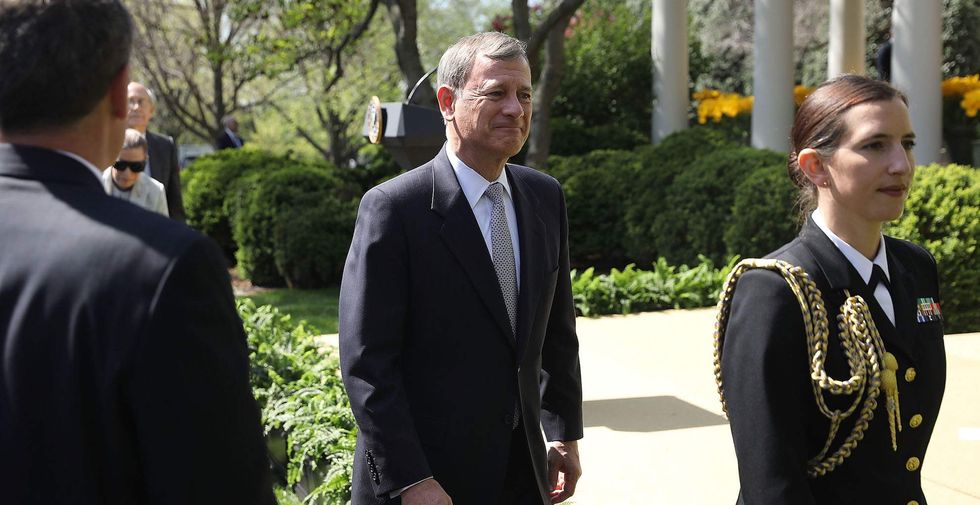
Chief Justice John Roberts said this week that the partisanship surrounding Supreme Court nominees has become a “real danger” to the high court. (Chip Somodevilla/Getty Images)

While conservatives are celebrating the confirmation of Supreme Court Justice Neil Gorsuch, Chief Justice John Roberts is warning that there’s a “real danger” facing the high court right now.
During a question-and-answer session at Rensselaer Polytechnic Institute earlier this week, Roberts said the “partisan hostility” that surrounded filling the Supreme Court seat vacated with the death of Justice Antonin Scalia threatens the sanctity of the court, the Washington Post reported.
“I want to point out one thing — that throughout this whole process, the Supreme Court has been quietly going about its business of deciding the cases before it, according to the Constitution, in a completely nonpartisan way,” Roberts said. “We’ve done it for the past 14 months with one vacancy, and we’ll do it going in the future now that we have a full complement.”
He continued:
It is a real danger that the partisan hostility that people see in the political branches will affect the nonpartisan activity of the judicial branch. It is very difficult I think for a member of the public to look at what goes on in confirmation hearings these days, which is a very sharp conflict in political terms between Democrats and Republicans, and not think that the person who comes out of that process must similarly share that partisan view of public issues and public life.
The chief justice’s comments came after university President Shirley Ann Jackson asked him about the “extremely partisan confirmation process” that led Senate Republicans to block hearings on former President Barack Obama’s Supreme Court nominee, Merrick Garland, and Democrats’ attempt to filibuster President Donald Trump’s nominee, Gorsuch.
In March 2016, Obama nominated Garland, but Senate Republicans — who controlled the 100-seat chamber — opted not to hold hearings on a Supreme Court appointee because it was an election year. Senate Majority Leader Mitch McConnell argued they were invoking the so-called “Biden rule,” named after a 1992 speech by then-Sen. Joe Biden (D-Del.), arguing against high court nominations during then-President George H.W. Bush’s final year in the White House.
This year, in retaliation to the GOP’s blocking of Garland, the Democrats tried to filibuster Gorsuch. In response, Republicans used the so-called “nuclear option” to push Gorsuch over the edge. The rule change lowered the threshold of votes needed to stop the filibuster of a Supreme Court nominee from 60 to a simple majority of 51.
While Roberts argued the politicization of Scalia’s seat was not good for the court, he is confident Gorsuch will set aside the politics in his role as a Supreme Court justice.
“The new justice is not a Republican, not a Democrat — he is a member of the Supreme Court,” he said. “But it is hard for people to understand that when they see the process that leads up to it.”